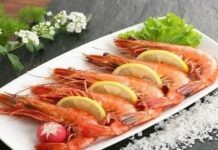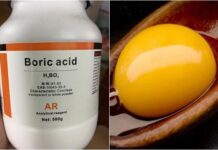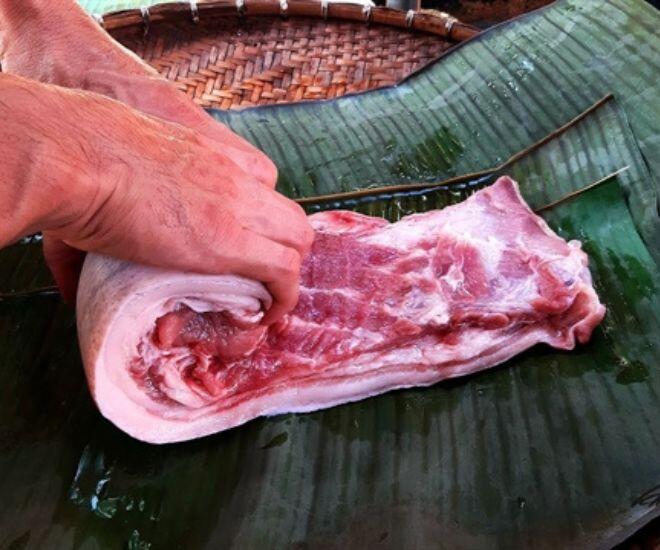
Gio Nay, also known as Gio Lay, Gio Cuon, or Gio Mo, is a culinary treasure deeply rooted in the traditions of Thai Binh province, Vietnam. Unlike common varieties such as Gio Xao, Gio Bo, Cha Mo, or Cha Que, which are made from minced meat, Gio Nay stands out with its unique preparation method—using whole pork belly wrapped in banana leaves. This distinct approach not only imparts a signature flavor but also elevates it to a symbol of local pride.
The star ingredient of Gio Nay is pork belly, a cut that combines lean meat, fat, and skin. This harmonious blend results in a texture that is both crispy and tender, rich yet not overly greasy. After cleaning, the meat is meticulously marinated with pepper, salt, MSG, and minced garlic. Some families add wood ear mushrooms for an extra crunch. The marination process, lasting 30 to 45 minutes, ensures the flavors penetrate every fiber of the meat.
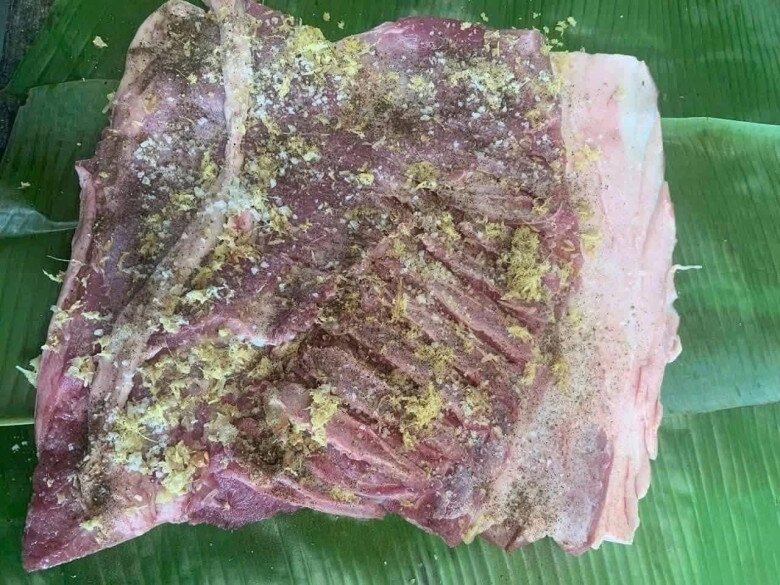
Once marinated, the meat is wrapped in banana leaves, tightly rolled, and secured with twine. This step demands precision; a loose wrap can cause the sausage to fall apart during cooking, compromising both texture and appearance. Skilled wrappers ensure the lean meat is evenly distributed, with the skin enveloping the entire roll, creating a cohesive block.
The wrapped sausage is then boiled in a large pot for 4 to 5 hours. The heat must be carefully regulated—too high, and the sausage becomes mushy; too low, and the meat remains undercooked. Maintaining a steady flame ensures the meat is thoroughly cooked, aromatic, and retains its crispness and sweetness. After boiling, the sausage is removed, cooled, and pressed—similar to pressing sticky rice cakes—to compact the ingredients, resulting in a firm, cohesive texture. The final product boasts a natural green hue from the banana leaves and a tantalizing aroma.
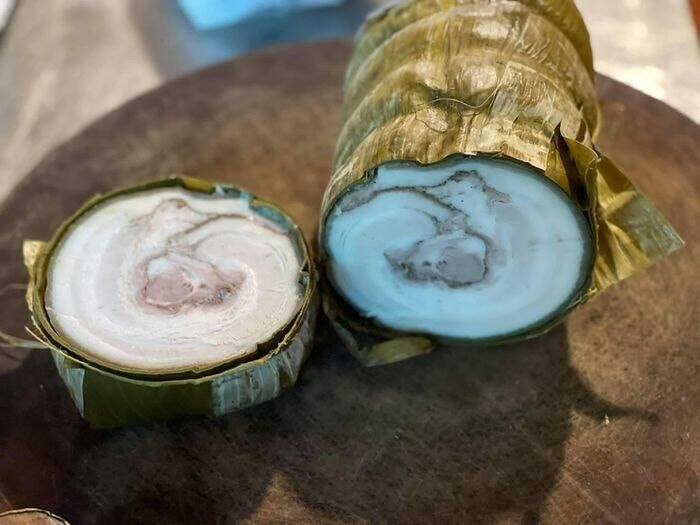
Gio Nay can be shaped into either round or square molds. It is typically sliced into rectangular pieces and served with pickled onions or papaya salad to balance its richness. This pairing transforms what could be a heavy dish into a refreshing, palate-pleasing experience, appealing to both adults and children.
In Thai Binh, Gio Nay is a staple at festivals, weddings, and ancestral anniversaries, symbolizing hospitality. Many families also gift it to loved ones during the Lunar New Year. Despite its intimidating appearance, its melt-in-your-mouth texture, refreshing taste, and aromatic blend of pork belly, pepper, and banana leaves win over even the most hesitant diners, making it an unforgettable culinary experience.
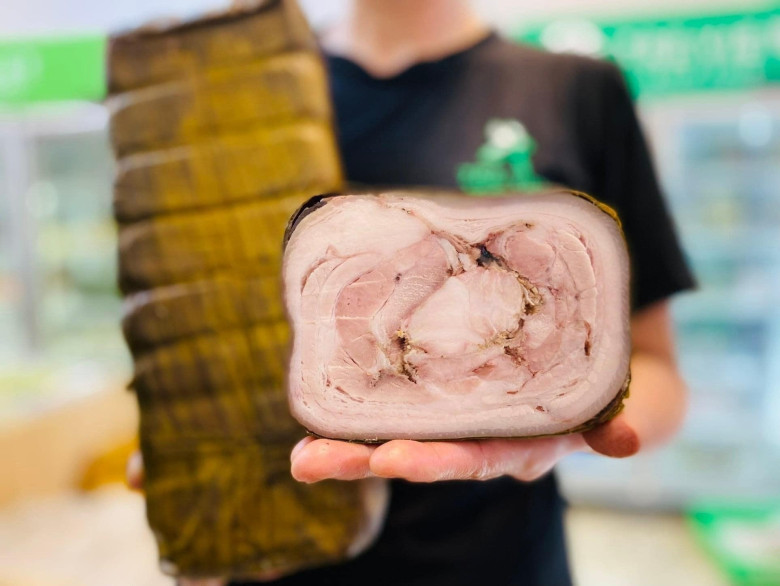
Priced between 300,000 and 400,000 VND per kilogram, Gio Nay’s cost fluctuates with seasonal demand and ingredient prices. During Tet, prices surge, yet it remains a hot commodity. Many are willing to pay a premium for this delicacy, considering it indispensable for their New Year feasts.
Gio Nay transcends its role as a dish, embodying the culinary ingenuity of Thai Binh. Within Vietnam’s diverse gastronomic landscape, it showcases the creativity and refinement of the rice-growing region’s cuisine. From the humble pork belly, a masterpiece is born, unmatched by any other sausage.
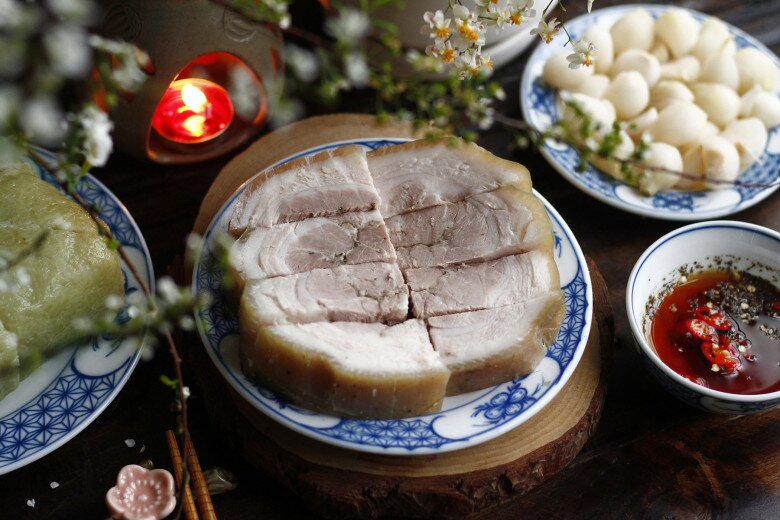
Today, as culinary tourism flourishes, Gio Nay has become Thai Binh’s culinary ambassador. Visitors are drawn not only to its scenic beauty and cultural heritage but also to savor this renowned specialty. Bridging tradition and modernity, Gio Nay has transcended local boundaries, becoming a must-try for anyone visiting Thai Binh.
Gio Nay is more than a palate cleanser; it is a testament to Vietnam’s culinary richness. Its refreshing flavor, unique texture, cultural significance, and visual appeal have cemented its place in the hearts of food enthusiasts, proudly representing the essence of Thai Binh’s cuisine.

























